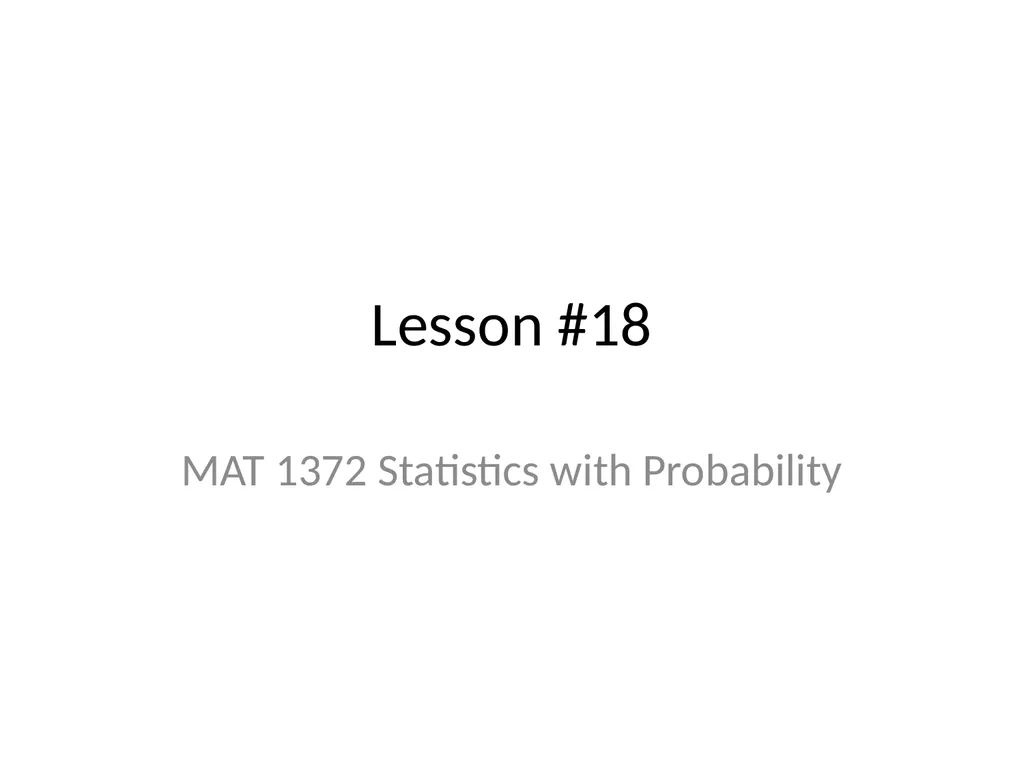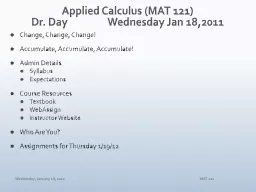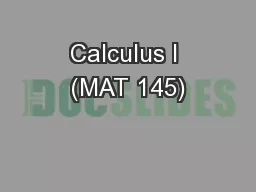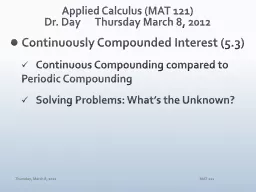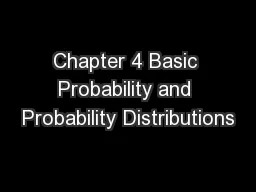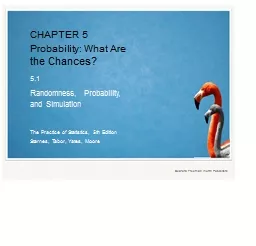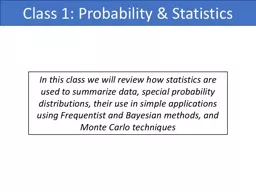Lesson #18 MAT 1372 Statistics with Probability
Author : stefany-barnette | Published Date : 2025-06-23
Description: Lesson 18 MAT 1372 Statistics with Probability The Central Limit Theorem If samples of size n 30 are drawn from any population with mean µ and standard deviation σ then the sampling distribution of sample means approximates a normal
Presentation Embed Code
Download Presentation
Download
Presentation The PPT/PDF document
"Lesson #18 MAT 1372 Statistics with Probability" is the property of its rightful owner.
Permission is granted to download and print the materials on this website for personal, non-commercial use only,
and to display it on your personal computer provided you do not modify the materials and that you retain all
copyright notices contained in the materials. By downloading content from our website, you accept the terms of
this agreement.
Transcript:Lesson #18 MAT 1372 Statistics with Probability:
Lesson #18 MAT 1372 Statistics with Probability The Central Limit Theorem If samples of size n ≥ 30 are drawn from any population with mean = µ and standard deviation = σ, then the sampling distribution of sample means approximates a normal distribution. The greater the sample size, the better the approximation. © 2012 Pearson Education, Inc. All rights reserved. 2 of 105 The Central Limit Theorem If the population itself is normally distributed, then the sampling distribution of sample means is normally distribution for any sample size n. © 2012 Pearson Education, Inc. All rights reserved. 3 of 105 The Central Limit Theorem In either case, the sampling distribution of sample means has a mean equal to the population mean. The sampling distribution of sample means has a variance equal to 1/n times the variance of the population and a standard deviation equal to the population standard deviation divided by the square root of n. Variance Standard deviation (standard error of the mean) © 2012 Pearson Education, Inc. All rights reserved. 4 of 105 Mean The Central Limit Theorem Any Population Distribution Normal Population Distribution Distribution of Sample Means, n ≥ 30 Distribution of Sample Means, (any n) © 2012 Pearson Education, Inc. All rights reserved. 5 of 105 Example: Interpreting the Central Limit Theorem Cellular phone bills for residents of a city have a mean of $63 and a standard deviation of $11. Random samples of 100 cellular phone bills are drawn from this population and the mean of each sample is determined. Find the mean and standard error of the mean of the sampling distribution. Then sketch a graph of the sampling distribution of sample means. © 2012 Pearson Education, Inc. All rights reserved. 6 of 105 Solution: Interpreting the Central Limit Theorem The mean of the sampling distribution is equal to the population mean The standard error of the mean is equal to the population standard deviation divided by the square root of n. © 2012 Pearson Education, Inc. All rights reserved. 7 of 105 Solution: Interpreting the Central Limit Theorem Since the sample size is greater than 30, the sampling distribution can be approximated by a normal distribution with © 2012 Pearson Education, Inc. All rights reserved. 8 of 105 Example: Interpreting the Central Limit Theorem Suppose the training heart rates of all 20-year-old athletes are normally distributed, with a mean of 135 beats per
